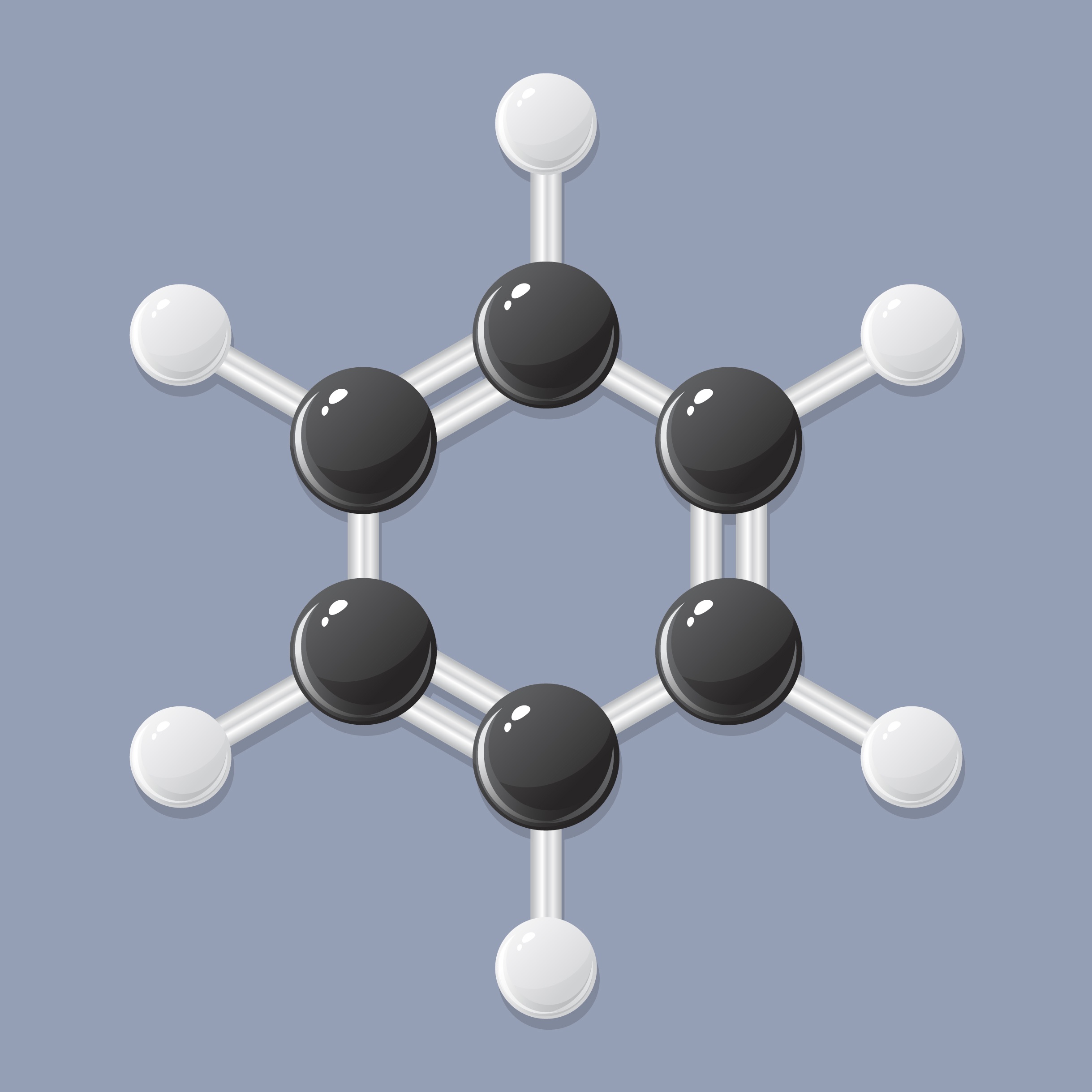Hot currents in benzene
Laser pulses of circularly polarized light can drive electrons around the ring of an aromatic molecule. For example, photoexcited -electron currents flow around a benzene ring formed by the hexagonal carbon-atom structure. Theoretical studies of such systems are promising, but they are limited to zero-temperature applications because they assume rigid molecules at rest.
Writing in Physical Review Letters, Manabu Kanno, Hirohiko Kono, and Yuichi Fujimura at Tokohu University, Japan, and Sheng H. Lin at Academia Sinica in Taiwan report a simulation of the interaction between photoexcited ring currents and vibrational atomic modes in an aromatic molecule ( -dichloropyrazine), which has characteristics of a chiral molecule. For such a molecule, currents can be created by linearly polarized light. Atoms in the molecule are found to vibrate with amplitudes that are sensitive to the direction of flow of the ring currents. This directional coupling allows the authors to propose detecting the switching behavior of -electron currents by monitoring the vibrational modes of the molecule.
Thermal fluctuations are not included in the simulations, but the coupling to vibrational modes suggests that photoexcited currents might be stable enough for high-temperature applications. The optical control of currents at accessible temperatures could open the door to a host of future molecular devices. Similar to supercurrents that flow in superconducting quantum interference devices (SQUIDs), molecular ring currents could be used in molecular detectors of localized magnetic flux at high temperatures. – Saad Hebboul
Correction (23 March 2010): Paragraph 2, sentences 1 and 2, ”…vibrational atomic modes in a chiral aromatic molecule ( -dichloropyrazine). For a chiral aromatic molecule…” changed to ”…vibrational atomic modes in an aromatic molecule ( -dichloropyrazine), which has characteristics of a chiral molecule. For such a molecule…”





